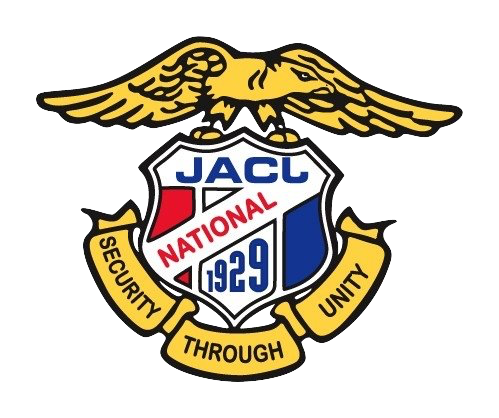Civil Liberties in Times of Crisis: The Japanese Americans Experience
2022 JACL NEH Landmarks | Program Details | Application Details | Program Staff, Faculty, and Speakers | Housing/FAQs | Apply!
Program Details
Civil Liberties in Times of Crisis: The Japanese American Incarceration will make explicit the lessons of the WWII Japanese American experience through content that emphasizes the universal issues of identity, community, patriotism, civil rights, and justice that continue to be relevant especially in recent social justice events. Prominent scholars noted community activists, and former incarcerees will share their perspectives, including:
Desert confinement: Daily Life in the camps
An expression of patriotism: Nisei (second generation) military service
Loyalty and resistance: The Tule Lake resisters
The power of words: Media portrayals
Through the eyes of those confined: Art in the camps
The trauma of incarcerations: Psychological impact
Constitutional significance: Korematsu, Hirabayashi, Yasui, and Endo
The price of liberty: The Redress and Reparations movement
Lasting legacy: the Japanese American community today
Through the lectures, discussions, and site visits, our Landmarks workshop will engage participants to consider the following questions:
Why were Japanese Americans incarcerated during World War II?
In what ways (physically, economically, emotionally, socially, psychologically, politically, and generationally) did the incarceration impact their community?
In what ways did various groups of Japanese Americans demonstrate or resist ideas of loyalty, patriotism, and resistance?
How were images of the incarceration shaped both within and outside of the Japanese American community?
How does place contribute to the preservation of the community memory?
What limits can the U.S. government place on individual liberties in times of crisis?
How are these lessons relevant today?
Schedule at a Glance
The full schedule will be released as speakers and venues are fully confirmed.
Day 1 - Establishing a Foundation (Sunday, June 19/July 10, 2022) - Participants will arrive in Los Angeles and meet with other participants and the project team for the first time while getting their first taste of the program.
Day 2 - Community Interrupted (Monday, June 20/July 11, 2022) - Participants will learn the pre-war history that led to the mass incarceration of the Japanese American community as well as some of what daily life was like in the camps.
Day 3 - Shaping Imagery (Tuesday, June 21/July 12, 2022) - Participants will visit Santa Anita Park, one of the “temporary assembly centers” used during World War II, and also learn how the US Government shaped how the camps were viewed by the public while the incarcerees portrayed their imprisonment in their own ways.
Day 4 - Manzanar (Wednesday, June 22/July 13, 2022) - The group will travel 4 hours outside of Little Tokyo to Manzanar National Historic Site to tour one of the ten War Relocation Authority (WRA) camps where over 10,000 Japanese Americans were incarcerated during the war.
Day 5 - Impact of Incarceration (Thursday, June 23/July 14, 2022) - Participants will learn about the wartime decisions that the incarcerees faced, including military service or resistance, as well as the post-war struggles and victories of the Japanese American community,
Day 6 - Closing (Friday, June 24/July 15, 2022) - The program will come to a close as participants learn about the Japanese American community in the present and the participants will present their group r
Foundational Texts
All these documents will be available for download at a later date except Farewell to Manzanar, which will be sent by mail upon confirmation of participation.
Government Documents:
Executive Order 9066
Civilian Exclusion Orders
“Loyalty Questionnaire”
Korematsu dissent – Justice Frank Murphy and Justice Robert Jackson
Required Readings:
Bannai, L. K. (2005). Taking the stand: The lessons of three men who took the Japanese American internment to court. Seattle Journal for Social Justice, 4(1), 1-57.
Commission on Wartime Relocation and Internment of Civilians. (1997). Personal Justice Denied: Report of the Commission on Wartime Relocation and Internment of Civilians. Seattle: University of Washington Press and Washington D.C.: Civil Liberties Public Education Fund. Page 7
Emi, F. S. (1989). Draft resisters at the Heart Mountain concentration camp and the Fair Play Committee. Frontiers of Asian American Studies: Writing, research, and commentary. G.M. Nomura et al., eds. Pullman, WA: Washington State University Press, 41-70.
Hirabayashi, L.R. (2002). Community destroyed?: Assessing the impact of the loss of community on Japanese Americans during World War II. Re/Collecting Asian America. J. Lee, et al., eds. Philadelphia: Temple University, 94 – 107.
Houston, J. W. (1973). Farewell to Manzanar: A true story of the Japanese American experience during and after the World War II internment. Boston: Houghton Mifflin.
Iwamura, J. N. (2007). Critical faith: Japanese Americans and the birth of a new civil religion. American Quarterly, 59(3), 937-968.
Kuramitsu, K. C. (1995). Internment and identity in Japanese American art. American Quarterly, 47(4), 619-658.
Tateishi, J. & Yoshino, W. (2000). The Japanese American incarceration: The journey to redress. Human Rights, 27. American Bar Association.
Wenger, G. L. (2007). Documentary photography: Three photographers' standpoints on the Japanese-American internment. Art Education, 60(5), 33-38.
Santa Anita Park
Aerial view of Santa Anita “Assembly Center” in 1942, courtesy of Densho Encyclopedia

